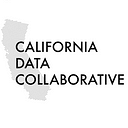How Desert Water Agency Prepares for Changing Regulations with the CaDC
Like her peers across California, Ashley Metzger, Outreach and Conservation Manager for Desert Water Agency (DWA), received an email from the State Department of Water Resources (DWR) early in 2021 asking for feedback. The email included a link to download dozens of opaquely-named files containing spatial data about her agency, yet little guidance about where and what to look for in her data.
Without any GIS or data analysts on-site, Ashley felt overwhelmed and unsure about how to prepare her organization’s response. And the stakes were high. If the State’s landscape area measurement (LAM) data were incorrect, it would have serious implications for DWA’s ability to comply with future water efficiency requirements.
So when Ashley received an email from the CaDC offering to perform a customized analysis of the LAM data free for CaDC members, she jumped at the opportunity.
Developing New Solutions for Regulation
Several months earlier, the CaDC’s Steering Committee of water managers had identified the need for analyses of LAM data as a top priority for the CaDC in 2021.
In collaboration with representatives from various member agencies, the CaDC team developed a rapid analysis service that would provide an initial evaluation of member agencies’ LAM data. By identifying discrepancies in DWR data and developing an estimate of each agency’s water use objective, the CaDC helps members establish a baseline for their data analysis process. In doing so, the CaDC has worked to provide a solution that can directly serve the needs of its members.
After testing and discussing the process with CaDC members, the CaDC was able to develop the code and methods used in the baseline analysis. The service received such positive feedback that the CaDC decided to scale the approach and offer the service to agencies in need across the state.
What the LAM Analysis Process Looks Like
After receiving the offer for LAM analysis, Ashley and her team scheduled an initial consultation to discuss the process. The CaDC team walked her through the sorts of issues that would be identified and what data would be required. Ashley shared the LAM data, and because DWA is a CaDC member agency, their customer meter data was already prepped and ready to go.
Afterward, DWA received a comprehensive analysis that helped identify problems with shifted parcels, residential common areas, and parkways in DWA’s LAM data. In addition, the CaDC provided estimates for residential water use objectives and suggestions for submitting feedback to DWR.
In doing so, CaDC was able to identify areas for improvement in water efficiency and provide clear steps for reporting data-related problems to DWR. The initial assessment further eliminated the need for outside consultation and helped DWA avoid costly misrepresentations in their data.
Working with the CaDC also helped Ashley and her team understand and prepare for what the water efficiency framework might mean for DWA. In this way, DWA may begin preparing and adjusting its water efficiency programs before regulations take effect.
Walking Away with Confidence
As a result, Ashley and the team at DWA felt empowered to plan and budget for new efficiency efforts, leaning on support from CaDC staff to address technical concerns in their analysis. In these ways, Ashley will be able to meet her organization’s deadline for LAM data feedback and develop plans for targeted efficiency prior to the release of water use objectives from DWR.
Work with the CaDC
If you are interested in learning more about the CaDC and our work, email us at info@theCaDC.org or visit theCaDC.org to read more.

